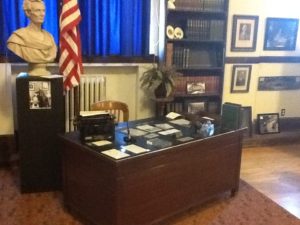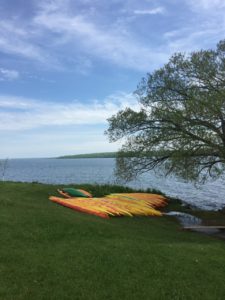
My name is Taylor Kelley, and this fall I’ll be beginning my final semester at the University of Wisconsin-Milwaukee’s School of Information Studies, where I’m working on an MLIS degree with an archives concentration. I’m really excited to be participating in the Curating Community Digital Collections (CCDC) program this summer and see it as an excellent opportunity to put the skills and knowledge I’ve attained to practical use with results that can be built on in the future.
My host site for CCDC is the Douglas County Historical Society in Superior on the exact opposite side of Wisconsin from me, giving me the distinction of being the student who will be doing the most traveling for the program. While working at such a distance can present challenges, I consider it a bonus to be able to become familiar with an area with which I previously knew little and to travel back and forth across a state that I truly love, being able to experience the varied landscape of a place that has so much regional identity.

A gem amongst the collections at Douglas County Historical Society are the photographs of David F. Barry, a 19th century photographer who not only owned and operated a photography studio in Superior but also spent time in the Dakotas where he photographed notable Native Americans such as Sitting Bull, Gall, and Rain-in-the-Face. Even if you’re not familiar with David F. Barry’s name, it’s very likely you are familiar with his photographs.
As a collection of particular historical importance and thus especially in need of preservation, I’m using the David F. Barry photographs as a sort of jumping off point in the development of a digital preservation policy that can be adapted to all of Douglas County’s digital collections. This includes the creation of an organizational scheme that can then make future file renaming easier, a metadata template that can facilitate searching within the collection, and a detailed workflow that volunteers at Douglas County can reference when preserving other collections in the future.

Thanks to business manager, and my site supervisor, Jon Winter, Douglas County Historical Society has a strong IT foundation. In working with Jon during my visits to Superior, I feel like we’re equally learning from one another as he is educating me on what technology is available to strengthen an archival collection and I’m sharing with him how information organization and archival theory can make those collections easier to work with and more accessible for patrons.

With our different skill sets and with the help of our mentor Heather Stecklein from the University of Wisconsin-Stout, I’m confident that by the end of this summer we’ll have put Douglas County Historical Society in a position where they can share their wonderful collections for many years to come.
For more information about Curating Community Digital Collections, visit https://recollectionwisconsin.org/digipres.
This project is made possible by the Institute of Museum and Library Services, #RE-85-17-0127-17.



You must be logged in to post a comment.